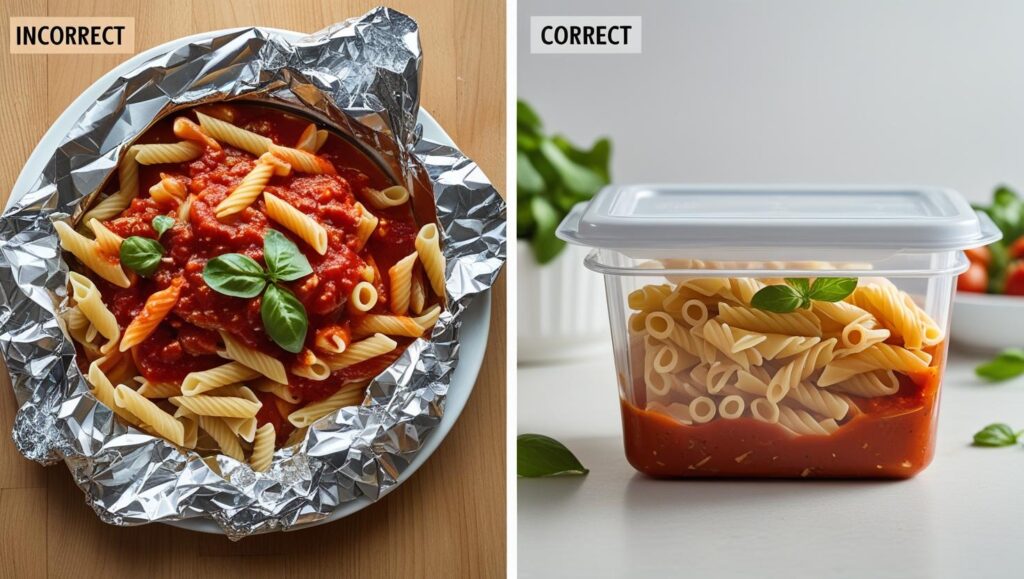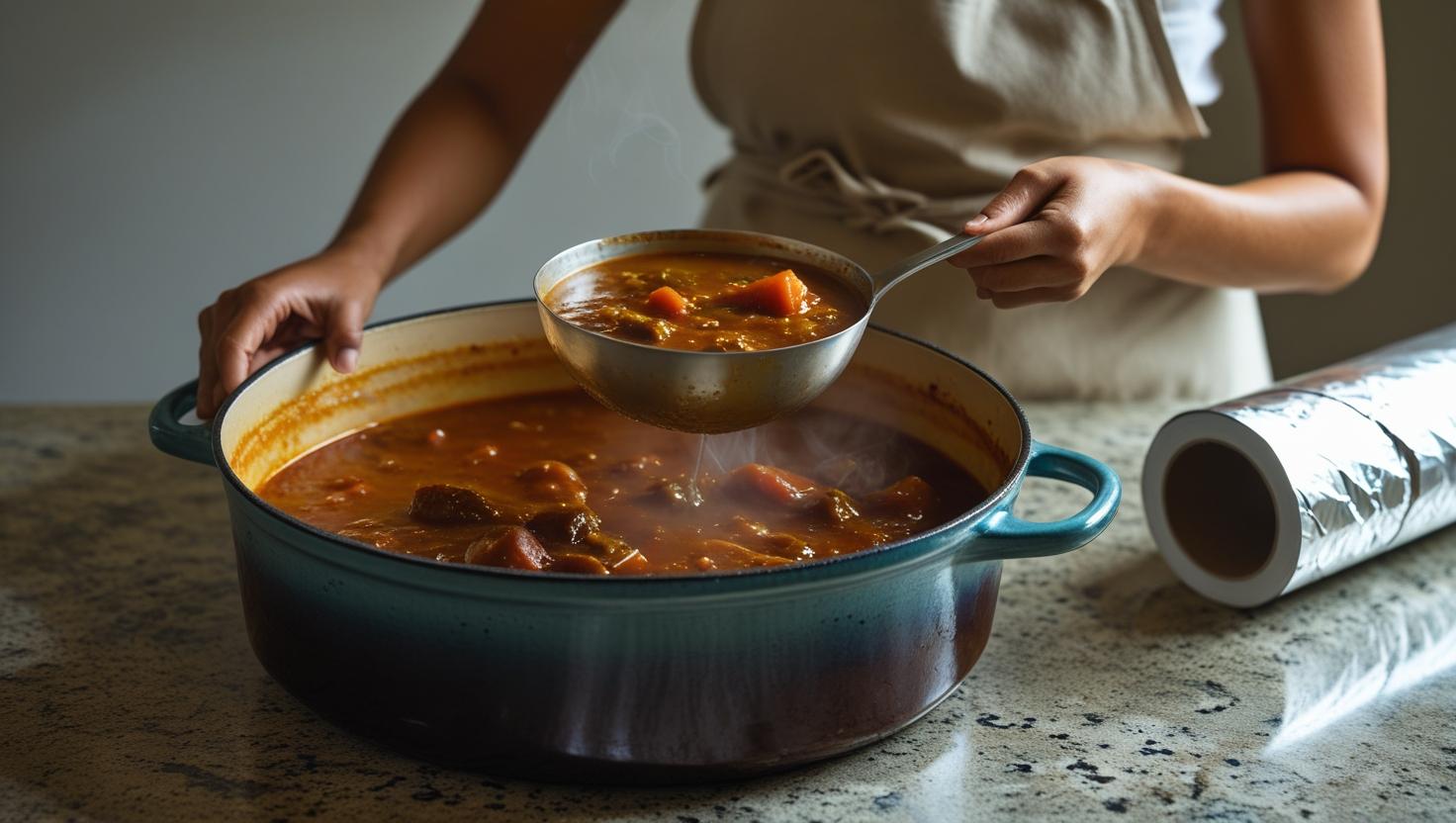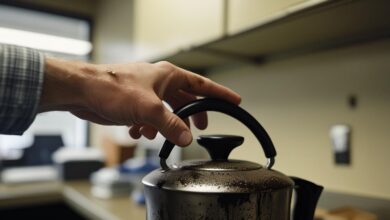A widely circulated social media trend suggesting that simply covering leftovers with aluminum foil is a sufficient and safe storage method is drawing sharp warnings from food safety experts. Health officials are re-emphasizing established food safety standards, cautioning that such practices can trap food in the “temperature danger zone,” significantly increasing the risk of foodborne illness caused by rapid bacterial growth.
Key Food Storage Guidelines
| Key Principle | Detail |
| The Two-Hour Rule | Do not leave perishable food out at room temperature for more than two hours (or one hour if temperatures are above 90°F / 32°C). |
| Temperature Danger Zone | Bacteria grow most rapidly between 40°F (4°C) and 140°F (60°C), doubling in number in as little as 20 minutes. |
| Proper Cooling Method | Divide large amounts of hot food into shallow containers to cool quickly in the refrigerator. |
The Science Behind the Spoilage
The primary risk associated with covering a plate of still-warm food with aluminum foil and placing it in the refrigerator stems from slow cooling. According to the U.S. Department of Agriculture (USDA), aluminum foil is not an effective seal; it does not prevent air from getting in. More critically, when draped over a hot dish, it traps heat and moisture.
This creates an ideal incubator for harmful bacteria. “Covering a large portion of hot food with foil can delay the cooling process significantly,” stated Dr. Angela Richards, a food microbiologist at a major research university. “The food remains in the temperature danger zone for too long, allowing bacteria like Clostridium perfringens and Bacillus cereus to multiply to dangerous levels.”
Clostridium perfringens is one of the most common causes of foodborne illness in the United States, with outbreaks often linked to large batches of food, such as roasts, stews, and gravies, that have been improperly cooled. The Centers for Disease Control and Prevention (CDC) notes that these bacteria produce a toxin that cannot be destroyed by reheating the food.

Adhering to Proper Food Storage
To mitigate these risks, health organizations worldwide advocate for a straightforward approach to proper food storage. The core principle is to cool food as quickly as possible.
The FDA and USDA provide clear guidelines:
- Divide and Conquer: Instead of refrigerating a large pot of soup or a whole roast, divide the food into smaller portions and place them in shallow containers. This increases the surface area, allowing heat to dissipate much faster.
- Mind the Clock: Adhere strictly to the two-hour rule. Perishable foods should be refrigerated within two hours of being cooked. If the ambient temperature is high (above 90°F or 32°C), this window shrinks to just one hour.
- Container Choice: While aluminum foil is useful for covering food that is already cold or for short-term reheating in an oven, it is not ideal for initial storage. “Airtight containers are superior for maintaining freshness and preventing cross-contamination in the refrigerator,” a spokesperson for the Food Standards Agency (FSA) in the United Kingdom advised in a public health bulletin.
This guidance is a cornerstone of global food safety standards. The World Health Organization (WHO) includes “keep food at safe temperatures” as one of its “Five Keys to Safer Food,” a global public health message aimed at preventing millions of cases of foodborne disease annually.
Clarifying Aluminum Foil Safety
The issue is not with the material itself but with its application. Aluminum foil safety is well-established for cooking and covering fully chilled foods. It acts as a barrier to light and oxygen, which can help prevent fats from going rancid.
However, its inability to create an airtight seal makes it less effective than dedicated containers for preventing spoilage over several days. “Think of foil as a temporary cover, not a long-term storage solution,” said Dr. Richards. “For freshness and safety, a container with a tight-fitting lid is always the better choice.”

The cleanup benefit, often touted in social media posts, can be achieved without compromising safety. Using airtight containers not only protects the food but also prevents spills and odors in the refrigerator, simplifying cleanup in the long run.
As consumers continue to seek convenient kitchen solutions, health experts urge a return to foundational safety principles. A spokesperson for the CDC concluded, “Following basic food safety guidelines is the most effective ‘hack’ there is for preventing food poisoning and ensuring your family stays healthy.”
FAQ on Food Safety Standards
Q: How quickly should hot food be refrigerated?
A: Hot food should be cooled and placed in the refrigerator within two hours of cooking. Divide large quantities into shallow containers to speed up the cooling process before refrigerating.
Q: Can reheating kill the bacteria in spoiled leftovers?
A: Not always. While reheating can kill some bacteria, certain types, like Bacillus cereus and Clostridium perfringens, can produce heat-stable toxins that are not destroyed by high temperatures and can still cause illness.
Q: How long can leftovers be safely stored in the refrigerator?
A: According to the FDA, properly stored leftovers can typically be kept for three to four days in the refrigerator. After that, the risk of food poisoning increases.


 Professional Chefs Crown McDonald’s-Style Fry as Best Frozen Fries Available to Consumers
Professional Chefs Crown McDonald’s-Style Fry as Best Frozen Fries Available to Consumers Study Reveals the Dirtiest Spot in Your Office Kitchen, and It’s Not What You Think
Study Reveals the Dirtiest Spot in Your Office Kitchen, and It’s Not What You Think